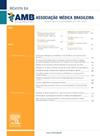The effectiveness of erector spina plane, quadratus lumborum blocks, and intrathecal morphine for analgesia after cesarean: a randomized study
IF 1.3
4区 医学
Q2 MEDICINE, GENERAL & INTERNAL
引用次数: 0
Abstract
SUMMARY OBJECTIVE: This prospective randomized study was conducted at Ataturk University Medical Faculty Hospital, Department of Anesthesia and Reanimation, from June 2022 to May 2023. The aim of this study was to compare the effectiveness of ultrasound-guided erector spinae plane block, quadratus lumborum block, and intrathecal morphine to decrease postoperative pain after cesarean section. METHODS: Sixty-term pregnant women who were scheduled for elective cesarean sections with spinal anesthesia were included. Patients were randomly divided into three groups (n=20 for each group): Group 1: Patients were administered intrathecal morphine during spinal anesthesia; Group 2: Patients performed bilateral erector spinae plane block postoperatively; and Group 3: Patients performed bilateral quadratus lumborum block postoperatively. In the postpartum care unit, patients received intravenous Patient-Controlled Analgesia. The Patient-Controlled Analgesia devices were set to administer an intravenous bolus of 25 μg fentanyl, with a lockout interval of 10 min. Opioid consumption and maximum pain score in the 24 postoperative hours were recorded. RESULTS: Patients in Group 1 had a longer time to first analgesic requirement compared to Group 2 (p=0.017). Opioid consumption and resting and moving visual analog score scores in the first 24 h postoperatively were similar between groups. CONCLUSION: All three methods, including intrathecal morphine, erector spinae plane block, and quadratus lumborum block, are efficacious and comparable in providing postoperative analgesia after cesarean under spinal anesthesia.竖脊肌平面、腰方肌阻滞和鞘内吗啡用于剖宫产后镇痛的有效性:一项随机研究
摘要目的:这项前瞻性随机研究于2022年6月至2023年5月在阿塔图尔克大学医学院附属医院麻醉与复苏科进行。本研究的目的是比较超声引导下直立者脊柱平面阻滞、腰方肌阻滞和鞘内吗啡对减轻剖宫产术后疼痛的效果。方法:纳入60例在脊髓麻醉下计划择期剖宫产的足月孕妇。患者随机分为三组,每组20例:第一组:脊髓麻醉时给予鞘内吗啡;第二组:术后行双侧竖脊肌平面阻滞;第三组:术后行双侧腰方肌阻滞。在产后护理病房,患者接受静脉自控镇痛。设置患者自控镇痛装置,静脉注射芬太尼25 μg,闭锁时间为10 min。记录术后24小时阿片类药物用量和最大疼痛评分。结果:1组患者达到首次镇痛需要的时间较2组长(p=0.017)。术后前24 h阿片类药物消耗、静息和运动视觉模拟评分两组间差异无统计学意义。结论:鞘内吗啡、竖脊肌平面阻滞、腰方肌阻滞三种方法均能有效地提供脊柱麻醉下剖宫产术后镇痛。
本文章由计算机程序翻译,如有差异,请以英文原文为准。
求助全文
约1分钟内获得全文
求助全文
来源期刊
CiteScore
2.20
自引率
0.00%
发文量
276
审稿时长
12 weeks
期刊介绍:
A Revista da Associação Médica Brasileira (RAMB), editada pela Associação Médica Brasileira, desde 1954, tem por objetivo publicar artigos que contribuam para o conhecimento médico.

 求助内容:
求助内容: 应助结果提醒方式:
应助结果提醒方式:


